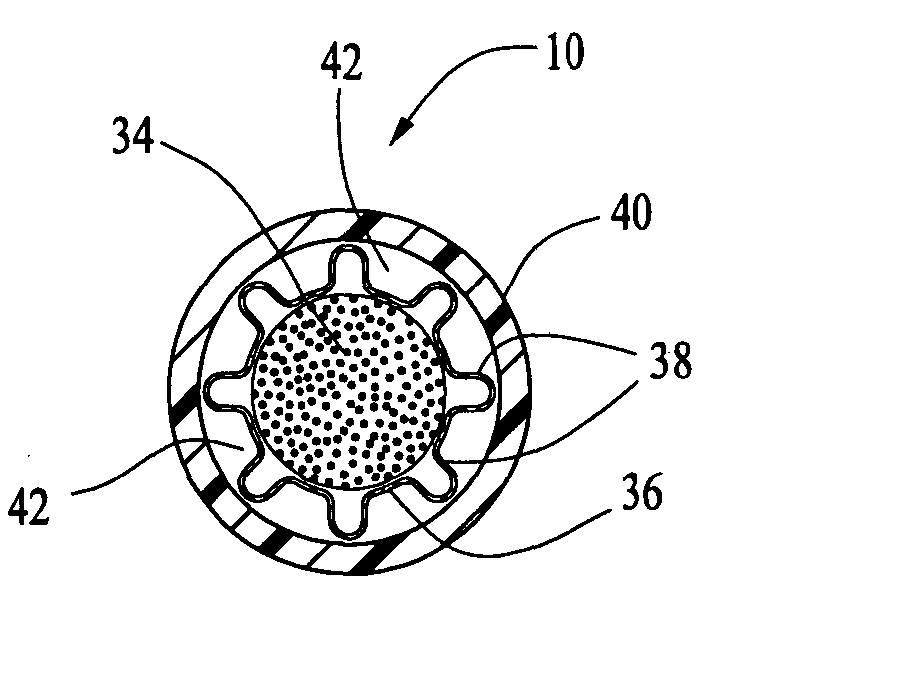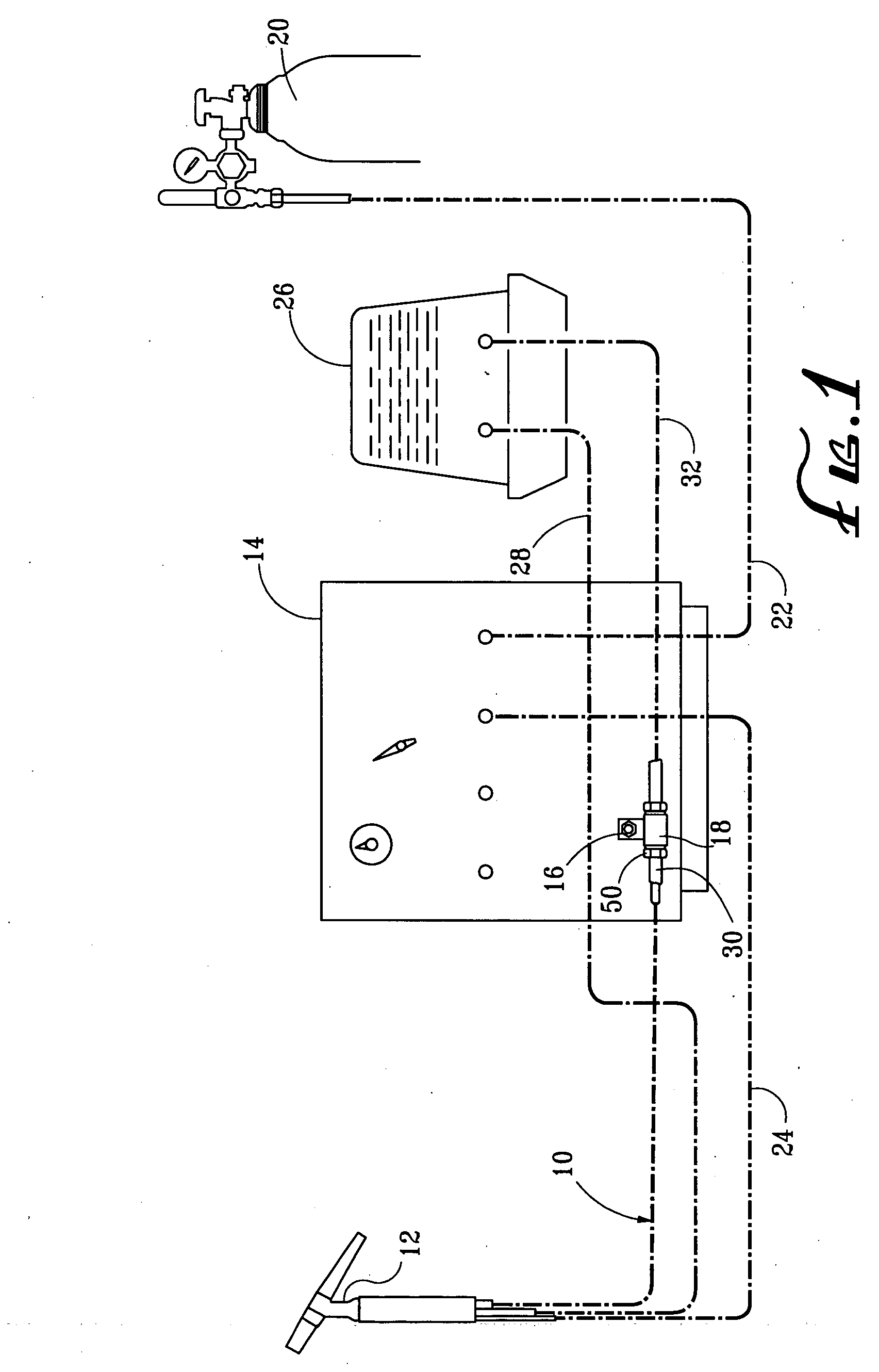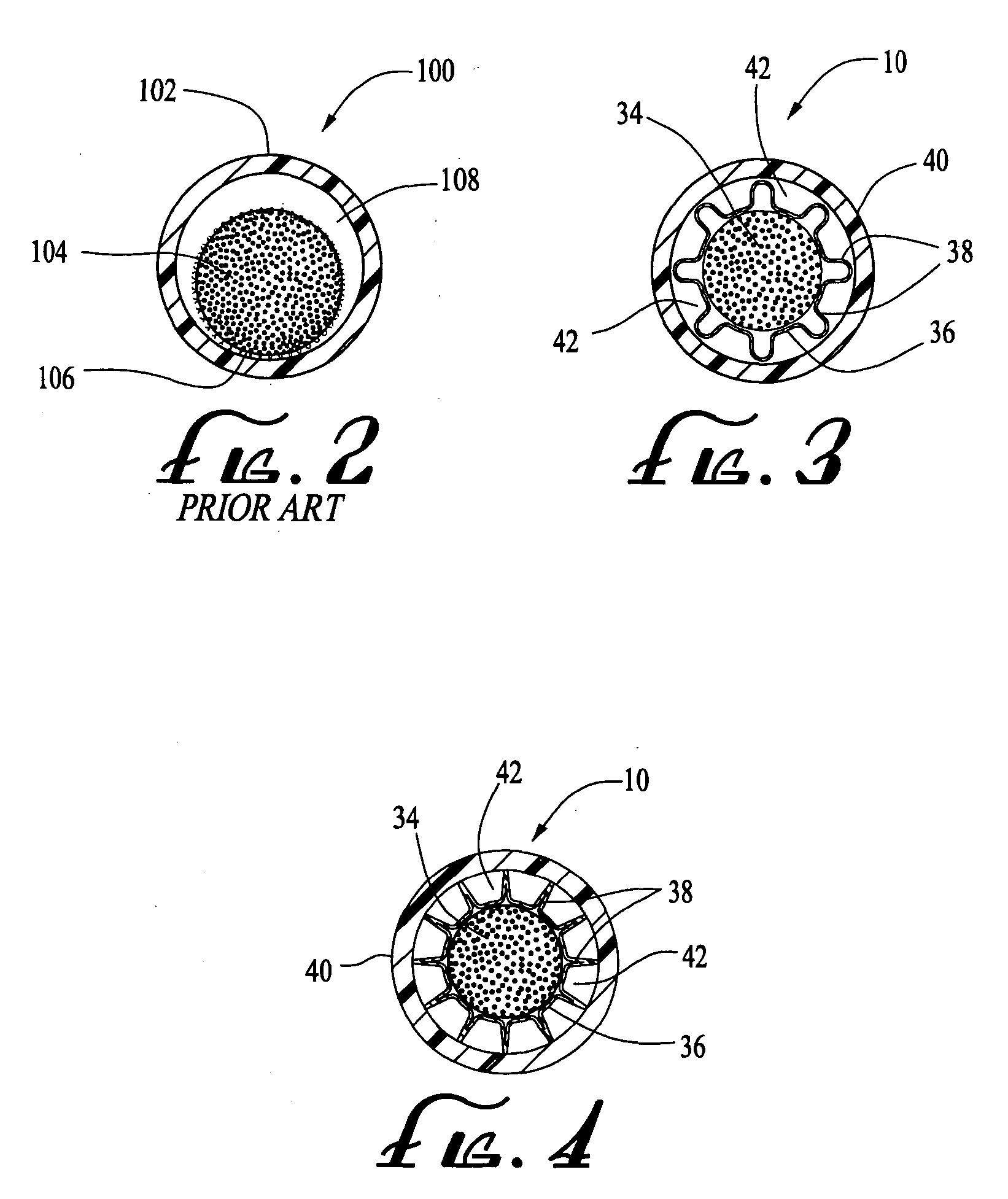Power cable assembly for water and air-cooled welding torches
a technology for water and air-cooled welding torches, which is applied to power cables, cables, insulated conductors, etc., can solve the problems of cable size, bulk and weight, and less efficient cooling conditions, and achieves the effects of reducing fraying of wire cables, preventing clogging of water passageways or connector fittings, and enhancing water cooling efficiency
- Summary
- Abstract
- Description
- Claims
- Application Information
AI Technical Summary
Benefits of technology
Problems solved by technology
Method used
Image
Examples
Embodiment Construction
[0012] Referring now in detail to the drawings, a typical power cable application in a water-cooled TIG welding assembly is illustrated in FIG. 1. As seen therein, the power cable assembly 10, to which the present invention is directed, extends between and electrically communicates the welding torch 12 with the welding machine 14 by virtue of the direct connection between the power cable assembly and an output stud 16 on the welding machine through an electrically conductive adapter 18. The inert tungsten gas is provided to the torch 12 from gas supply 20 through lines 22 and 24 via the welding machine 14. Cooling water is provided to the torch from the circulator reservoir 26 via line 28. The water is returned to the reservoir 26 through the power cable assembly 10, a flow-through conduit portion 30 of adapter 18 and fluid-flow return line 32. As the water flows through the power cable assembly 10, it cools the electrically conductive cable disposed therein.
[0013] A cross-section ...
PUM
| Property | Measurement | Unit |
|---|---|---|
| length | aaaaa | aaaaa |
| diameter | aaaaa | aaaaa |
| flexible | aaaaa | aaaaa |
Abstract
Description
Claims
Application Information
 Login to View More
Login to View More - R&D
- Intellectual Property
- Life Sciences
- Materials
- Tech Scout
- Unparalleled Data Quality
- Higher Quality Content
- 60% Fewer Hallucinations
Browse by: Latest US Patents, China's latest patents, Technical Efficacy Thesaurus, Application Domain, Technology Topic, Popular Technical Reports.
© 2025 PatSnap. All rights reserved.Legal|Privacy policy|Modern Slavery Act Transparency Statement|Sitemap|About US| Contact US: help@patsnap.com



